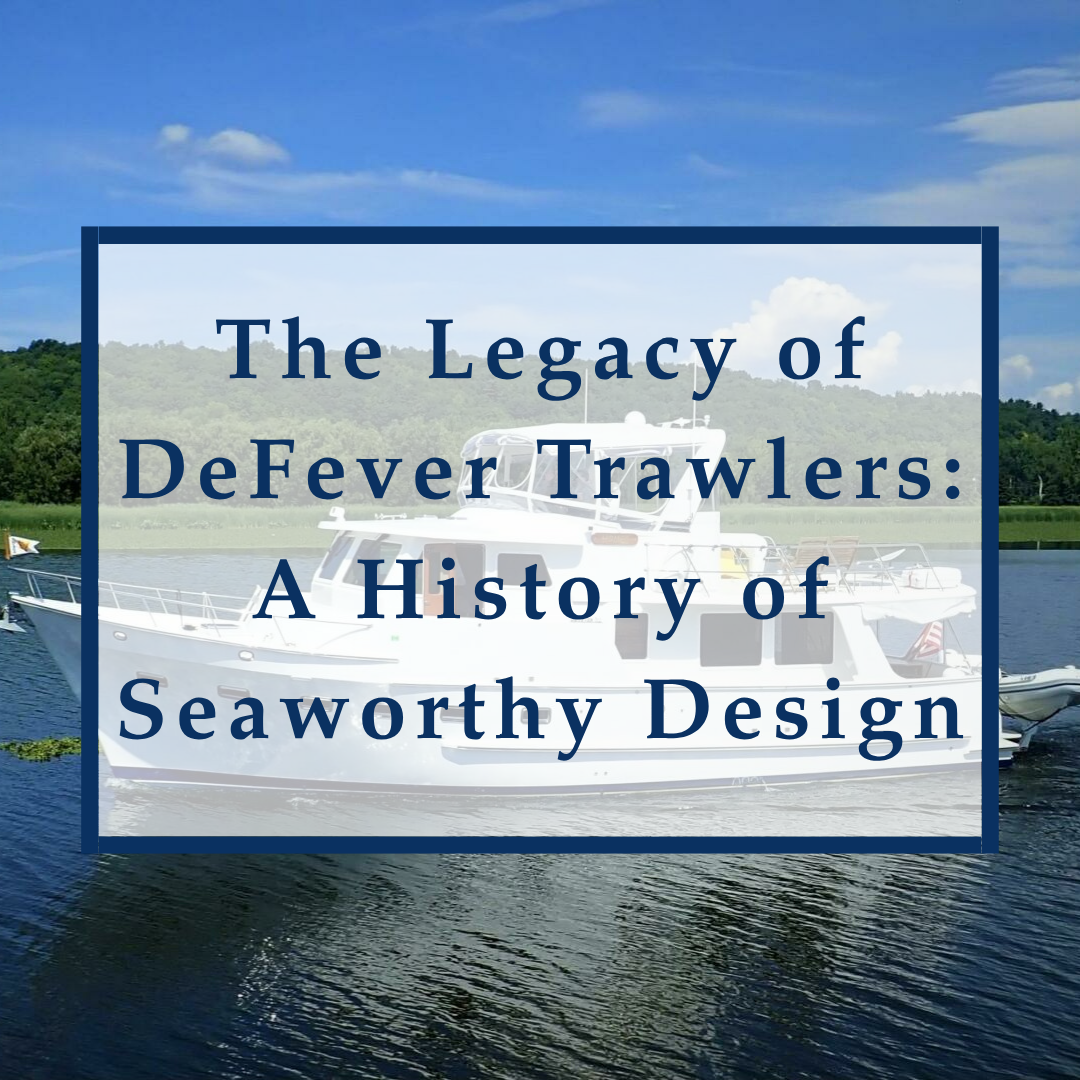When it comes to classic offshore cruising powerboats, few names carry the weight of Arthur DeFever. Known for their seaworthiness, full-displacement hulls, and distinctive lines, DeFever’s trawler designs have carved out a lasting niche in the world of long-range cruising. Today, these boats are as relevant as ever, turning heads in marinas and offering peace of mind underway.
Let’s look at some of the standouts in the DeFever lineup and why these boats still draw attention from serious cruisers and sellers alike.
Before becoming a staple in the trawler world, Arthur DeFever made his mark designing commercial tuna clippers for the San Diego fleet. These vessels were built to stay at sea for weeks, often journeying to Central and South America and back without a hitch. That same DNA – rugged construction, dependable handling, and ocean-crossing range – was soon repurposed for private yachts.
In the early 1960s, DeFever joined the Offshore Cruising Society, an organization of forward-thinkers interested in powerboats as true bluewater cruisers. They commissioned DeFever to design a series of power trawlers ranging from 38 to 54 feet, purpose-built for the Pacific. These early boats, built in wood or steel, were constructed at yards like Lindwall in Santa Barbara and facilities in Mexico. Vessels like PAU HANA II, a 1960 build, are still cruising today.
Evolution From Wood to Fiberglass
Throughout the ’60s and ’70s, DeFever designs were built in Japan and Mexico in both wood and steel. Notable early examples include MEERHEIM, a 42′ steel boat from Guaymas, and EMILY B, a 50′ wooden DeFever still cruising today. Arthur himself owned and cruised the first hull of EMILY B‘s design.
By the end of the 1970’s, the boatbuilding world had seen a major shift: steel and wood were giving way to fiberglass. Why? Several key reasons:
- Durability Without Rot or Rust
- Molding Efficiency and Consistency
- Strength and Flexibility
- Long-Term Repairability
- Fuel Efficiency Boost Due To Weight
Arthur DeFever saw the advantages of fiberglass early. Partnering with the CTF yard in Taiwan, he shifted to boats that maintained traditional lines and offshore integrity, but with the low-maintenance benefits and modern strength of fiberglass construction. The high bow, swept sheer, and full-displacement hull stayed intact, delivering the same safe, steady ride that cruisers valued. The shift also brought more interior space and, in many cases, twin-engine configurations for improved maneuverability.
A Portfolio of Ocean-Ready Cruisers
By the late 1970s and early ’80s, DeFever trawlers were coming out of top-tier builders like Jensen Marine in California and CTF in Kaohsiung, Taiwan. These include popular models like the:
- DeFever Passagemaker 34
- DeFever 40
- DeFever 43
- DeFever 44 Offshore Cruiser
- DeFever 49 Raised Pilothouse
- DeFever 52 Offshore Cruiser
- DeFever 60 Offshore Cruiser
These boats were known not only for their looks but also for their liveaboard comfort and ocean-going capability – traits that made them ideal for long-term cruising, coastal exploration, and seasonal migration.
Performance Cruisers Join the Lineup
By the mid-1980s, the market began to ask for more speed. Arthur responded with a new generation of semi-displacement trawlers that could cruise efficiently at displacement speeds but had the horsepower and hull form to get up and go when needed.
The DeFever 51 POC (Performance Offshore Cruiser) led the charge, followed by the 47 POC, 53 POC, and 57 Cockpit POC—all built at the Sen Koh yard in Taiwan. These boats offered the best of both worlds: range and comfort with a little more get-up-and-go.
Modern Designs & Continued Popularity
Through the 1980s and into the 2000s, DeFever added models like the DeFever 41, built first by Miracle Marine Corporation and later by Bluewater Yachts.
DeFever also continued to evolve past models with updates like the DeFever 45 (based on the 44 Offshore Cruiser) and the DeFever 50 Cockpit. Raised pilothouse designs from 46 to 56 feet remain popular for their commanding views, extra storage, and timeless lines.
From the rugged commercial heritage to their current status as sought-after cruising yachts, DeFever trawlers have always stood for practicality, endurance, and elegance. The megayacht SOUTHERLY and several sailboats in the DeFever portfolio reflect the same hallmarks that keep boaters loyal: traditional lines, reliable handling, and layouts that actually work for life aboard.
Arthur DeFever passed away in 2013, but his boats continue to cross oceans, find safe harbor, and deliver owners to the next great anchorage. A DeFever doesn’t follow trends – it defines them.
Standout Models
Let’s look at some of our favorites in the DeFever lineup and why these boats still draw attention from serious cruisers and sellers alike.
DeFever 41
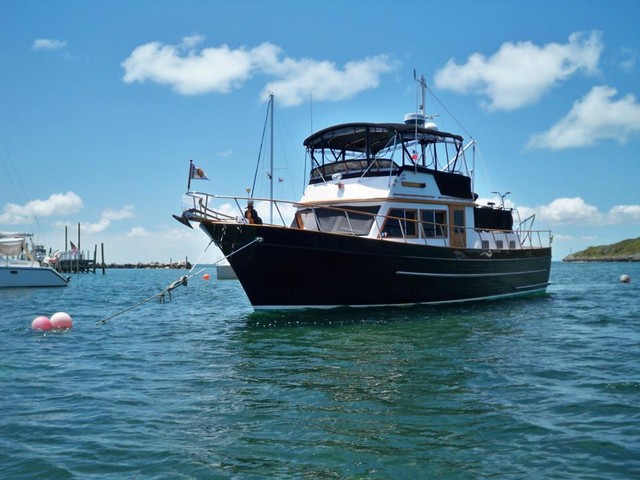
A compact passagemaker with the soul of a much larger trawler, the DeFever 41 was introduced in the late 1970s and built by multiple yards, including Miracle Marine and later Bluewater Yachts. With a full-width aft master stateroom, forward guest cabin, and two heads, she makes excellent use of her 41-foot length.
Many of these engines were powered by a single 135-hp Perkins 6-354 naturally aspirated diesel engine, offering medium-range cruising at 6-7 knots with fuel capacity around 400 gallons. A full keel and solid fiberglass hull give the 41 serious offshore credentials, while wide walk-around decks and a covered aft deck make her ideal for liveaboards or loopers. Though smaller than her sisters, the DeFever 41 delivers the same timeless styling, seaworthiness, and efficient interiors that define the DeFever name.
DeFever 48
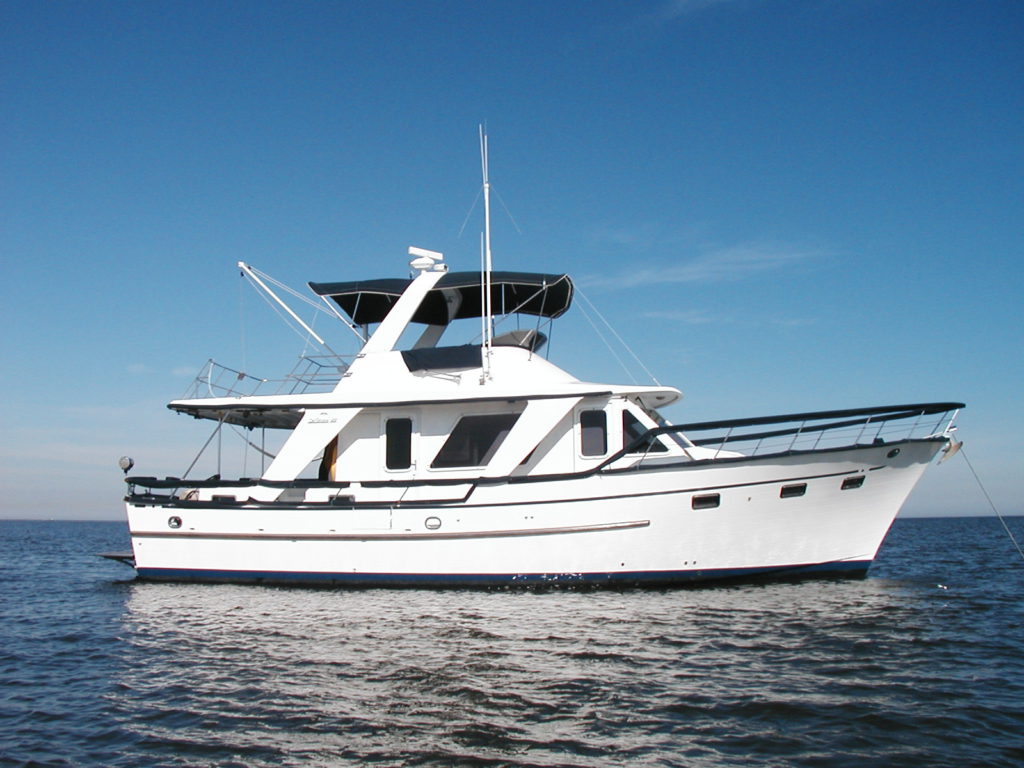
The DeFever 48 stands out with its classic downeast profile, robust hull, and liveaboard-ready accommodations. It’s a proper long-range cruiser with a full walkaround deck, a covered aft deck “garage” ideal for dinghies, dive equipment, and toys, and a flybridge helm set well aft – perfect for softening the ride in head seas.
Owners find a spacious aft stateroom with two guest cabins forward, sometimes in a bunk layout, along with two heads and separate showers.
The boat was built with two engine configurations, which make a noticeable difference in how the boat is best cruised. The more common option is twin 135-hp Lehman diesels: simple, fuel-efficient, naturally aspirated engines that leave enough space in the engine room to fit stabilizers. The other option was twin 375-hp Caterpillar 3208 TA engines, which give you a faster cruising speed and a bit more throttle response in adverse conditions.
The 48 boasts an exceptional range thanks to 950 gallons of fuel and 500 gallons of fresh water. Early models were built at the well-regarded CTF yard in Taiwan, with later versions built in mainland China.
DeFever 49 Cockpit Motor Yacht (CMY)
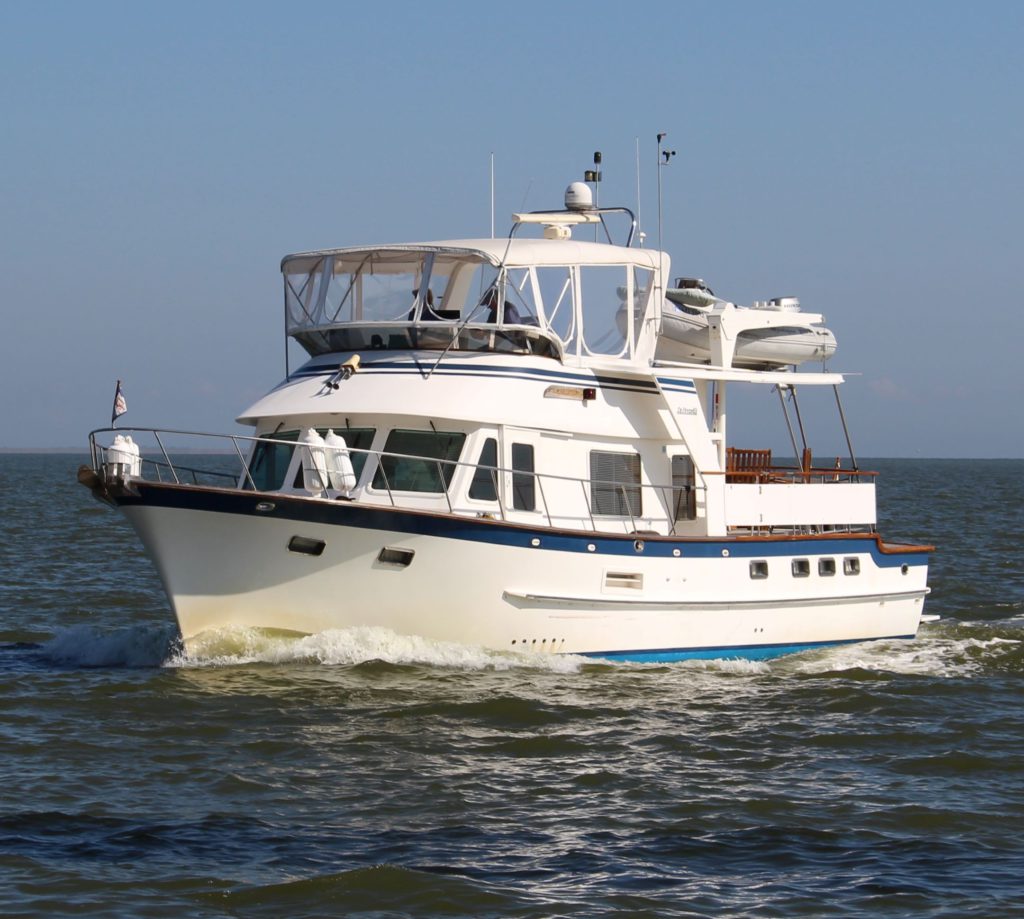
Often referred to as a “44 plus 5,” the DeFever 49 is essentially the 44 Offshore Cruiser extended with a full cockpit, adding versatility for fishing, boarding, or line-handling. She typically carries more fuel (1,100 gallons) and benefits from a longer waterline.
Designed with tropical cruising in mind, the flybridge is shaded by a large Bimini and often enclosed with canvas. Many owners choose to run the boat from the bridge, enjoying great visibility and ventilation. Finishing production in 2019, this model remains in high demand among couples looking to cruise comfortably with the ability to host guests.
DeFever 52 Offshore Cruiser
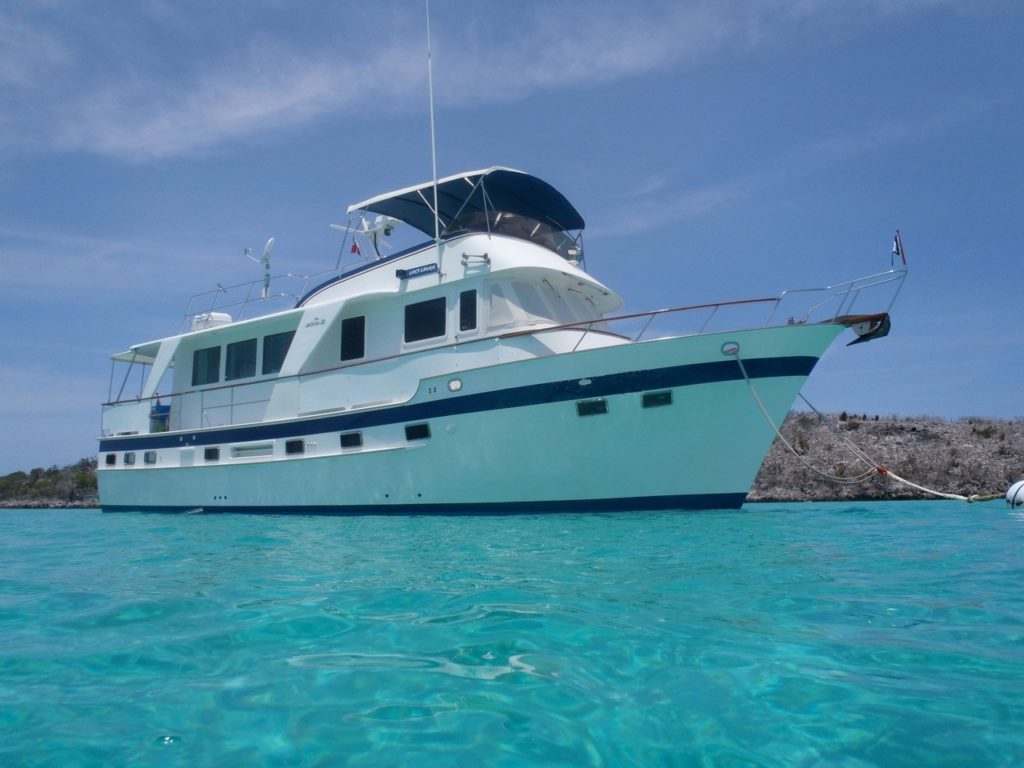
If you’re looking for long-haul capability and home-like comfort, the 52 Offshore Cruiser delivers. Its flush-deck design opens up surprising interior volume, with an aft master stateroom offering a staggering 12 feet of hanging locker space. The forward guest stateroom rivals the owner’s quarters in comfort, while a third cabin in the bow features stacked bunks.
You’ll find a walk-in engine room with massive, 6’4” headroom, plus enough tankage – 1,500 gallons of fuel and 500 gallons of water – to cover around 1,200 miles between fuel stops. Most models carry a tender up to 15 feet on the boat deck. Built primarily in the 1980s by CTF in Taiwan, some later models feature factory-extended cockpits. Similar to the 48, this boat was built with either twin Ford Lehmans or the Twin Caterpillar 3208TA engines.
DeFever 53 Performance Offshore Cruiser (POC)
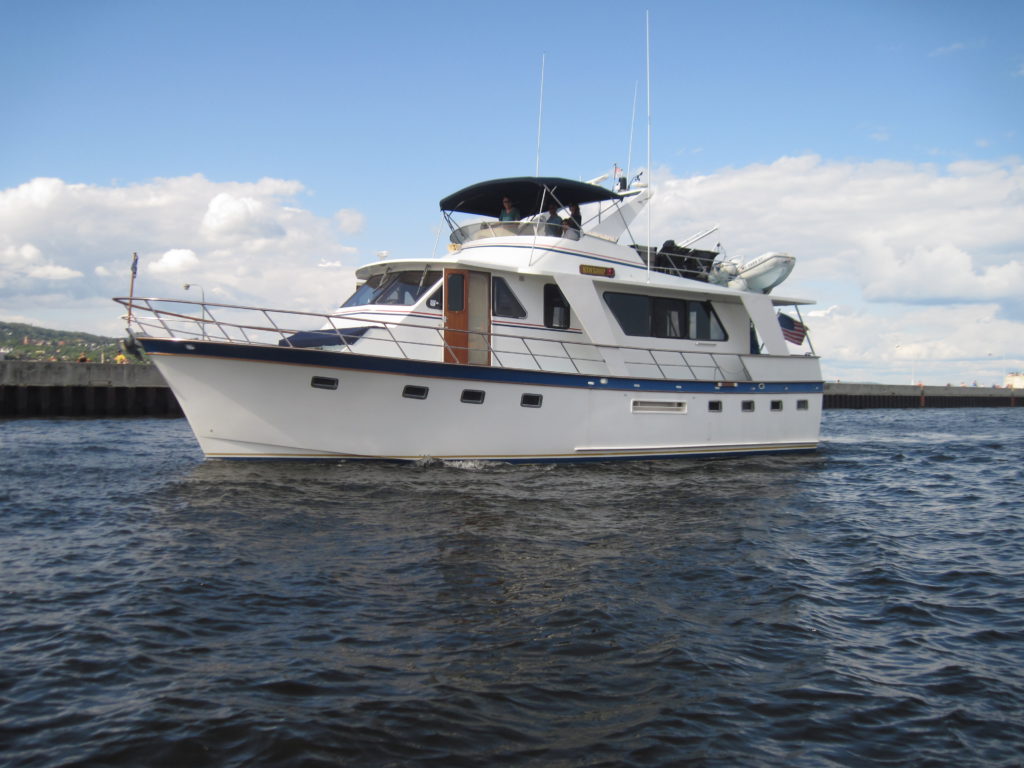
Designed in response to owner demand for more speed and performance, the DeFever 53 POC blends classic DeFever style with a semi-displacement hull and bigger power. Most are equipped with twin Caterpillar 3208TA diesels, allowing cruising speeds in the 10–12 knot range and top speeds into the mid-teens – faster than most traditional DeFever trawlers. The 53 POC offers a spacious flush-deck layout with a full-beam master stateroom aft, two guest cabins forward, and walk-in engine room access. A wide beam and generous tankage – typically around 1,000+ gallons of fuel – make her well-suited for extended cruising. Built at the Sen Koh yard in Taiwan during the late 1980s and 1990s, the 53 POC is a favorite among liveaboards and long-range cruisers who want DeFever comfort with a little more pace.
DeFever 60 Offshore Cruiser
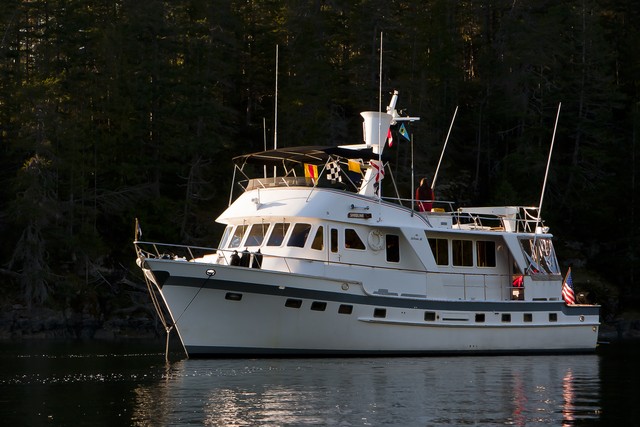
The 60 Offshore Cruiser is the flagship of traditional DeFever styling: flush-deck profile, full walkarounds, and a striking raised pilothouse silhouette. Built between 1978 and 1989 at the CTF yard in Taiwan, the 60 typically includes three or four staterooms with the master suite aft, a full-beam engine room, and space for a 16-foot tender up top.
Powered by twin Caterpillar 3306 diesels, she cruises comfortably at 9–10 knots and can cover approximately 2,000 miles on 2,500 gallons of fuel. A 17’8″ beam and 5’6″ draft keep things stable offshore, while the 750-gallon water capacity supports serious time off the dock.
Grand Alaskan 60–65
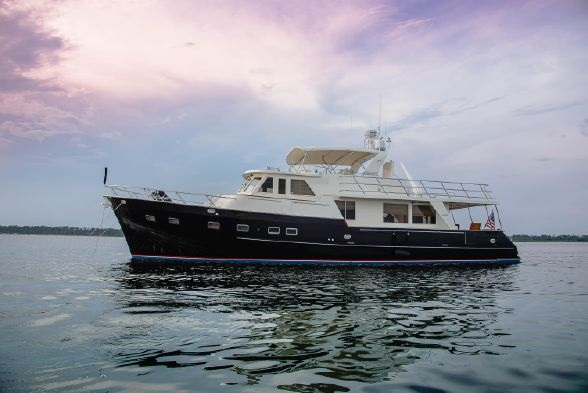
Although not badged under the DeFever name, the Grand Alaskan 60 and 65 carry Arthur’s design DNA. These semi-displacement yachts offer both planing performance and efficient cruising at 10 knots. Built at the Tania yard in Kaohsiung, Taiwan, they provide serious range, excellent build quality, and luxury-level comfort. A natural evolution of DeFever’s offshore cruiser roots – these boats are a top pick for anyone looking to move up without leaving the brand philosophy behind.
Looking to Buy or Sell a DeFever?
If you’re in the market for a DeFever trawler for sale or considering listing your DeFever, you’re tapping into a network of passionate cruisers who know what these boats are capable of. Models like the DeFever 44, DeFever 49, and DeFever 41 remain highly sought after by serious cruisers who value comfort, fuel efficiency, and seaworthiness over flash.
And if you’re a seller wondering how to position your vessel – “best liveaboard trawler,” “bluewater cruiser with range,” or “offshore-capable yacht for sale” – you’re in the right place. These are boats that speak for themselves, but it never hurts to have someone who knows how to tell the story.

